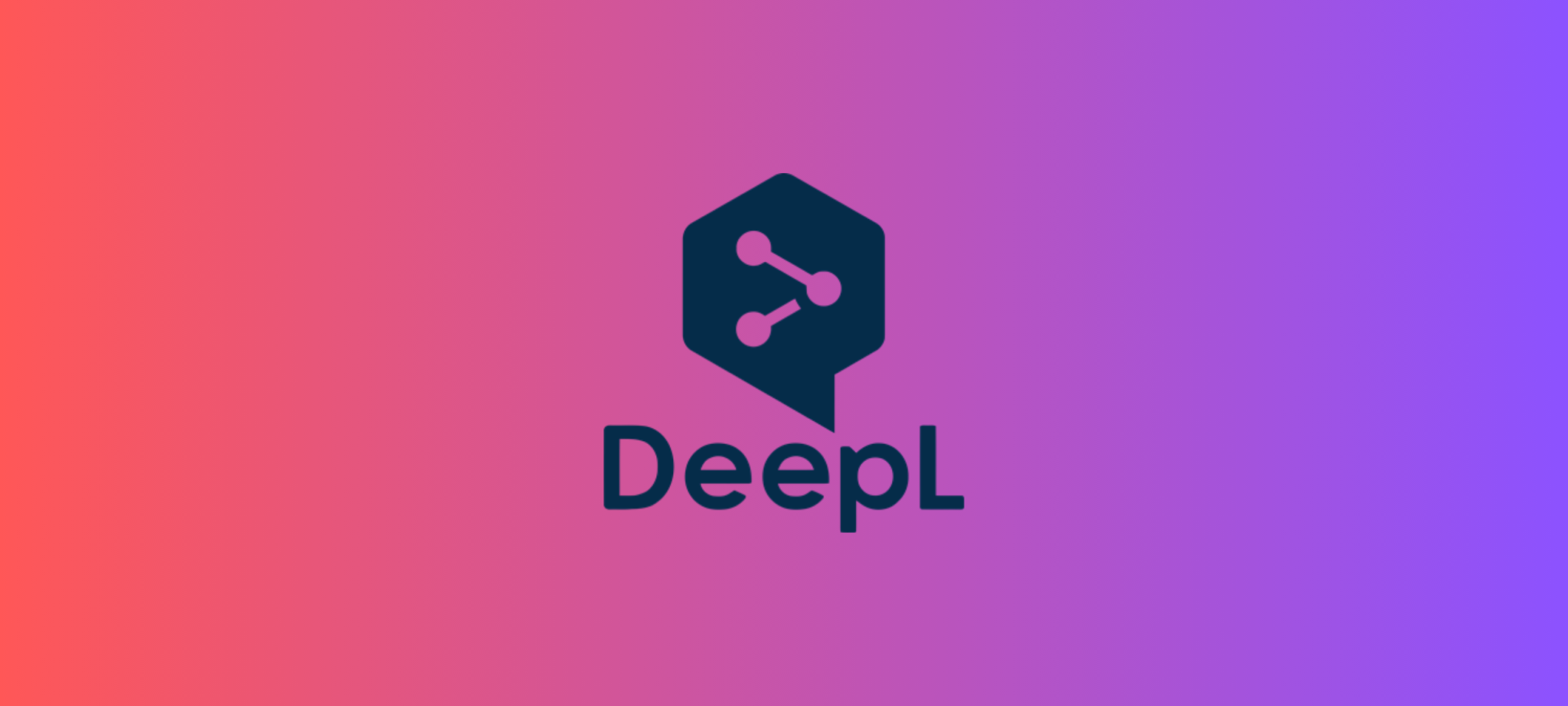DeepL Translator is a neural machine translation (NMT) engine that utilises advanced artificial intelligence to convert text from one language to another. Developed by Jaroslaw Kutylowski and originally part of the Linguee project, DeepL was released in August 2017. With more than 500 employees, the company has become a leading translation tool known for its high accuracy and natural-sounding translations. Today, it has more than 100,000 companies and millions of users.
What is the Use of DeepL?
DeepL is primarily used to translate text and documents between multiple languages with high accuracy. It offers several interfaces for users, including a web interface, desktop and mobile apps, and an API for integrating its translation capabilities into other applications. DeepL is widely used by individuals, businesses, and developers to facilitate communication across language barriers, create multilingual websites, translate documents, and more. Today DeepL supports 30 languages, as can be seen in the list below.

How to Use DeepL?
Using DeepL is straightforward. Users can access its services through various methods:
- Web Interface: Visit the DeepL website, paste or upload the text/document to be translated, and view the translation instantly.
- Desktop and Mobile Apps: Install the DeepL app on Windows, macOS, iOS, or Android devices. The app offers features like keyboard shortcuts, real-time camera translations, and speech translation.
- API: Developers can integrate DeepL’s translation capabilities into their own applications by using the DeepL API. This is useful for automating translations for websites, apps, and other digital platforms.
Is DeepL Using AI?
Yes, DeepL uses advanced artificial intelligence, specifically neural machine translation (NMT) technology. This AI-driven approach allows DeepL to understand the context of the text it translates, providing more accurate and fluent translations. The AI is trained on a vast database of translated texts, which helps it learn and improve over time.
Is DeepL Translator Free?
DeepL offers both free and paid versions of its translation services. The free version allows users to translate up to 1500 characters at a time without registering. After becoming a member, this limit increases to 5000. The paid version, DeepL Pro, offers additional benefits such as higher character limits, improved security and access to the API for developers.
Is DeepL Translator Good?
Yes, DeepL Translator is widely regarded as one of the best machine translation tools available. It is praised for its superior translation accuracy and ability to understand context, which often results in more natural and human-sounding translations compared to other services like Google Translate.
At this point, we can prove how powerful a translation tool DeepL is with a test. It is really good that DeepL translates the text without taking it out of context, we can understand this more clearly with the following example. Since my native language is Turkish, I would like to experiment with Turkish-English translations. For example, let’s take the sentence ‘Who is the CEO of Adept AI?’, when we translate (1) it on DeepL, it makes a correct translation as ‘Adept AI CEO’su kimdir?’. When we translate (2) the same example with the title and paragraph as given in the image below, it translates the title as ‘Adept AI’ın CEO’su kim olacak?’ in the future tense, since it is said in the paragraph that Zach Brock is not currently CEO, but will be. In other words, when the first sentence is translated alone, it translates differently, and when it is translated together with the paragraph, it makes a different translation by evaluating the text in context.
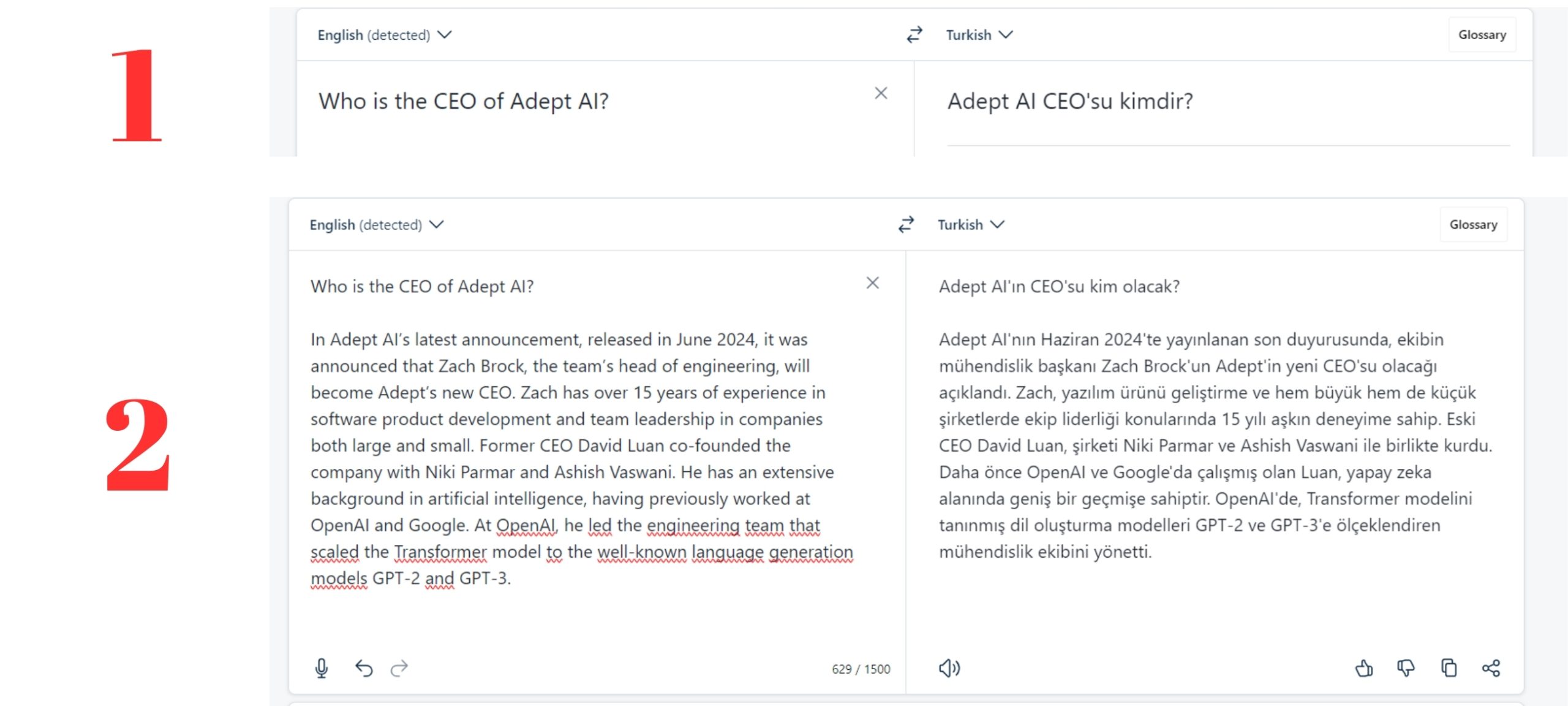
What is the Difference Between Google Translate and DeepL?
Yes, there are quite a lot of differences. The main differences between Google Translate and DeepL are in translation accuracy and the context of sentences. DeepL is often praised for its superior translation quality, especially for European languages, thanks to its advanced neural networks and extensive training data from the Linguee database. Google Translate is also highly effective, but supports a wider range of languages and offers additional features such as audio and video translation. However, for the languages supported by both services, DeepL’s translations are generally considered to be more natural and contextually accurate. In examples 3 and 4 below, we see that Google Translate does not translate in the same way as DeepL when we try the same example we did in the previous section. In this example, we can see that Google Translate translates by ignoring the information in the paragraph, whether there is a paragraph under the title or not, and detaches the sentence from its context.
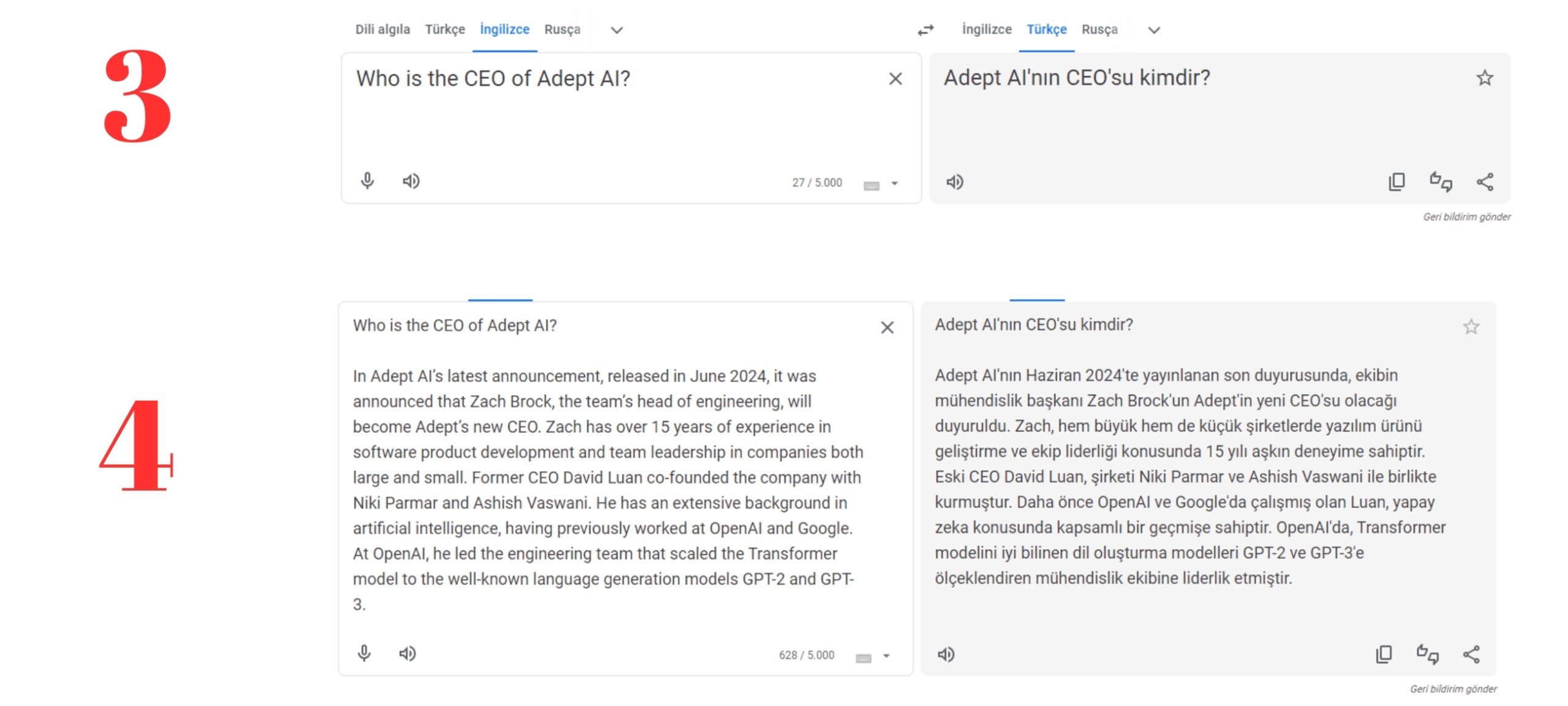
Is ChatGPT Better Than DeepL?
DeepL and ChatGPT serve different purposes, making direct comparison challenging. DeepL is specialized in translation, providing highly accurate and contextually appropriate translations between multiple languages. ChatGPT, on the other hand, is a versatile language model capable of generating human-like text, answering questions, and performing various language-related tasks. For pure translation needs, DeepL is generally preferred due to its specialized focus and higher accuracy. However, for broader applications involving language understanding and generation, ChatGPT might be more suitable.
In support of the above, we can see that ChatGPT 4o translates in a similar way to Google Translate in our 5 and 6 example based on our same example, as can be seen in the image below. Since DeepL specializes in translation, it is currently ahead of all other translation tools.

DeepL Chrome Extension
As you can see in the image below, I can also say that the DeepL Chrome extension is also very successful for quickly translating texts on websites without leaving the website. In addition, it also allows you to translate the texts you write through the browser.

DeepL Translator is a powerful and reliable tool for translating text and documents across multiple languages. It stands out for its high translation accuracy, user-friendly interfaces, and integration capabilities through its API. While it has some limitations in its free version, the Pro version offers extensive features and benefits, making it suitable for both personal and professional use. This bar chart represents the number of visits to DeepL from April to June. In May, DeepL experienced the highest number of visits at 227 million, followed by a decrease in June to 207 million visit
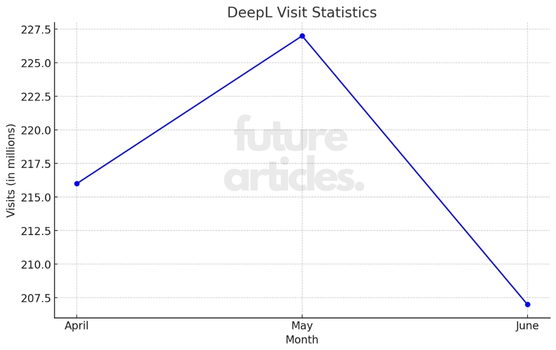
Compared to other translation services like Google Translate, DeepL is often preferred for its superior translation quality, especially for European languages. The pie chart titled “DeepL Most Visited Countries” illustrates the distribution of visits from various countries. Germany accounts for 13.15% of the visits, making it the top country in terms of visit percentage. Japan follows closely with 11.12%. France contributes 6.95% to the overall visits, while China and Spain account for 5.06% and 4.75%, respectively. The chart provides a visual representation of the top countries visiting DeepL, highlighting Germany and Japan as the leading sources of traffic. In addition, according to the graph, more than 60% of DeepL usage comes from European countries.
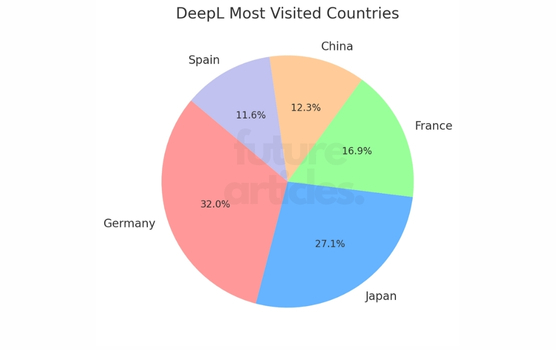
Whether for casual use or business applications, DeepL provides a robust solution for overcoming language barriers with the help of advanced AI technology. In May 2024, DeepL received $300 million in investment from Atomico, Index Ventures, Institutional Venture Partners, World Innovation Lab (WiL), Ontario Teachers’ Pension Plan and ICONIQ Growth, with a current enterprise valuation of over $2 billion.
If you’ve read this far, you’ve earned it, so let me give you a little tip as a long-time user of DeepL. If you are using the free limited version and often can’t continue due to over limit, you might want to delete DeepL cookies in your browser😉


